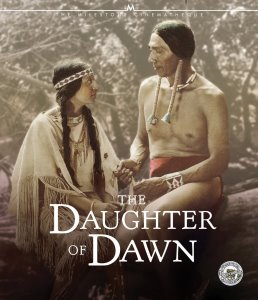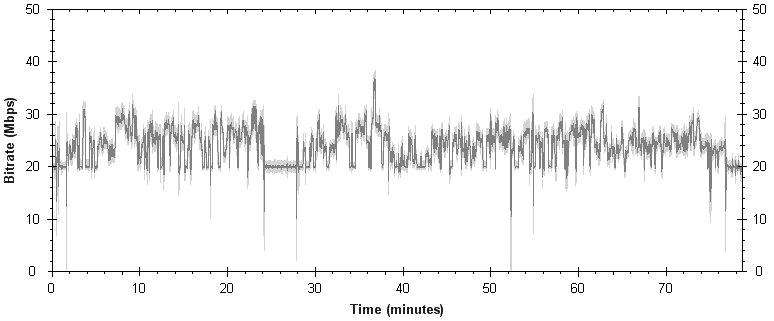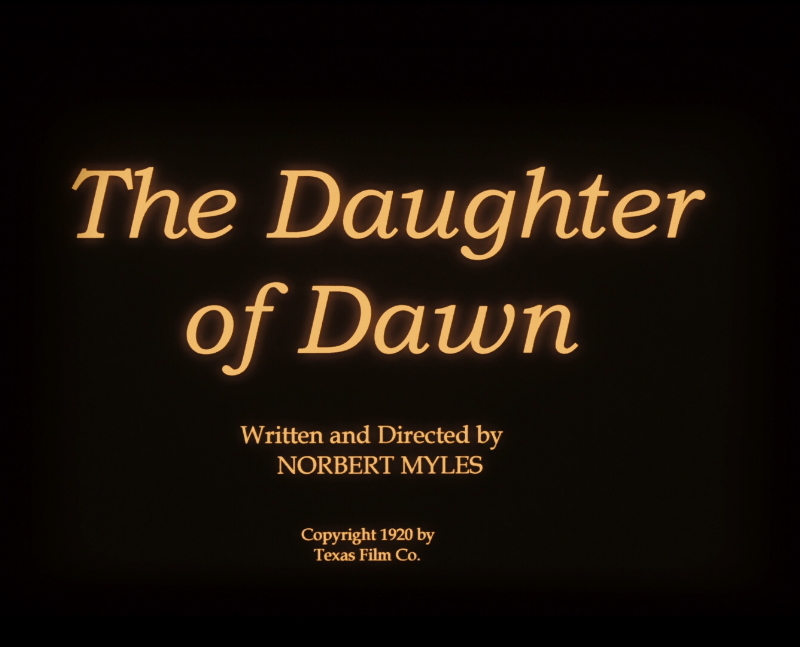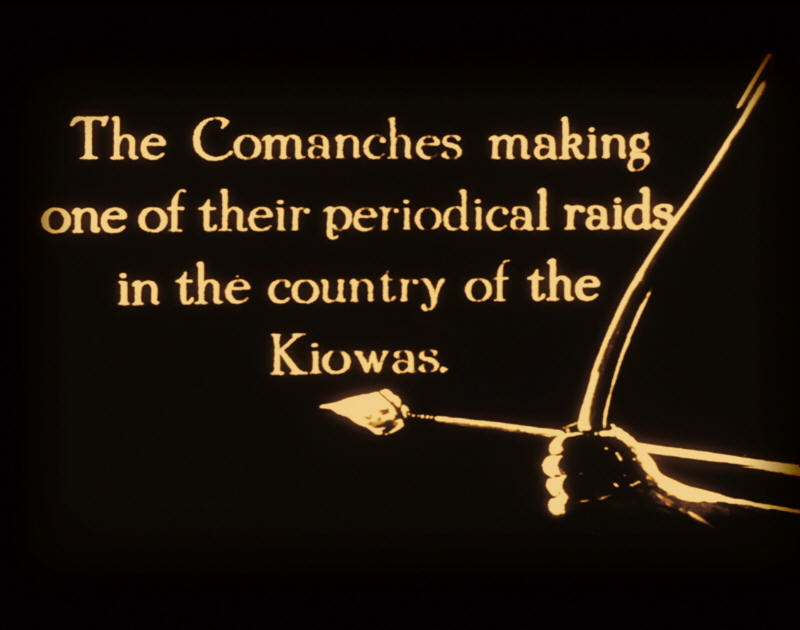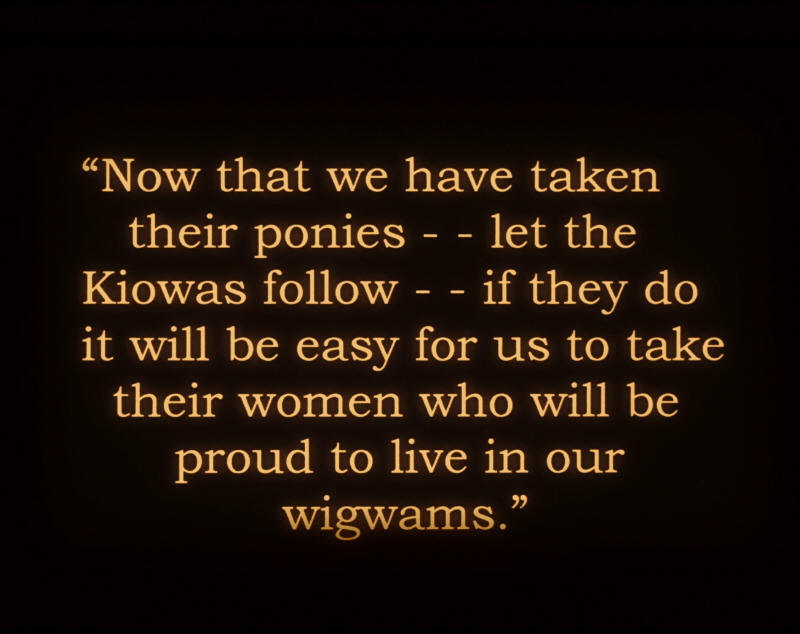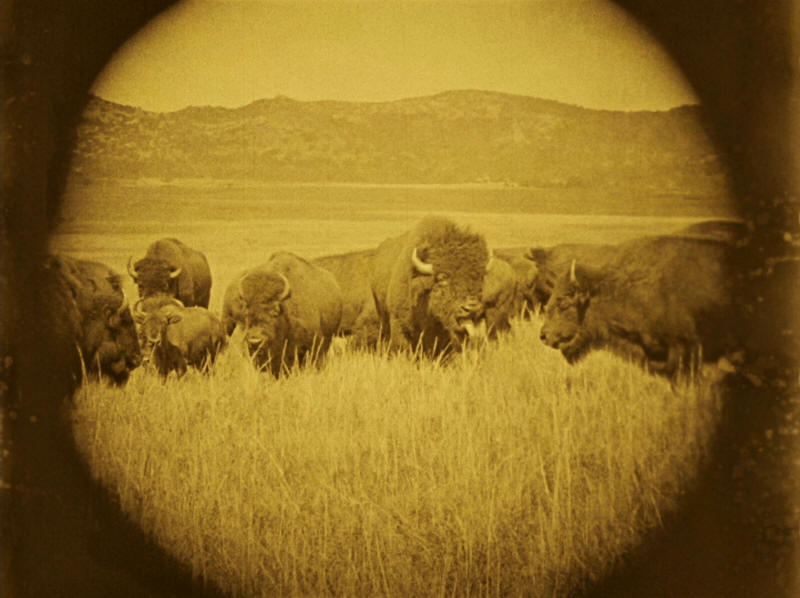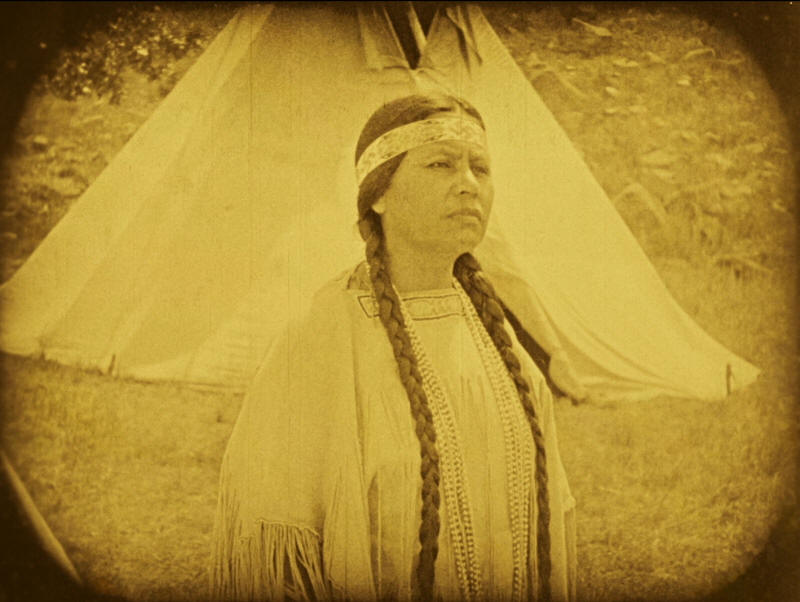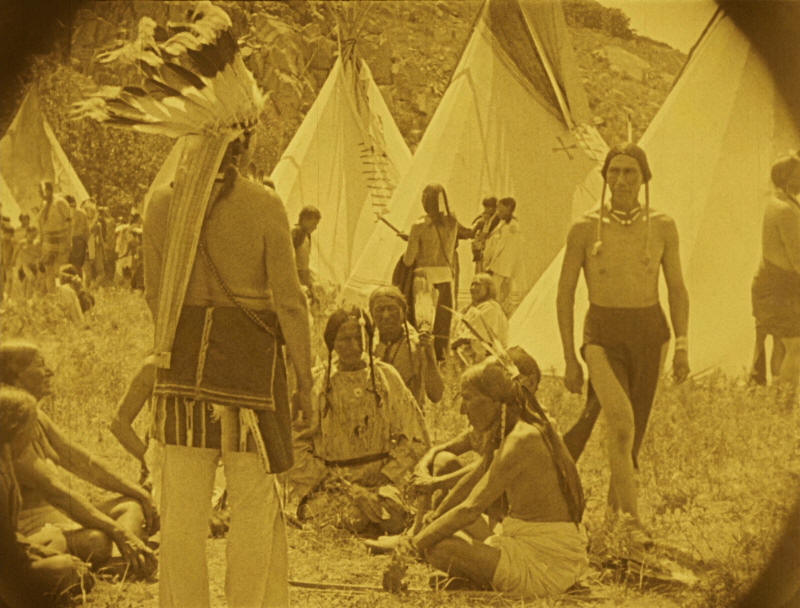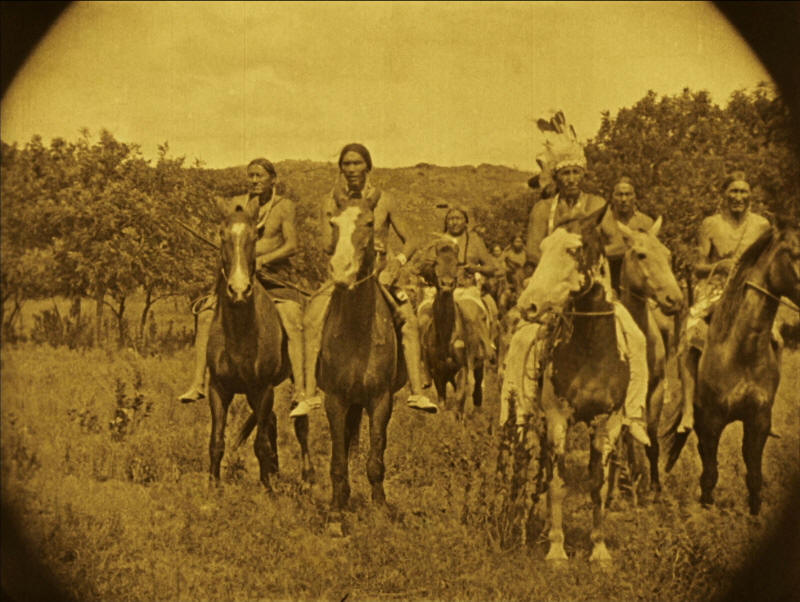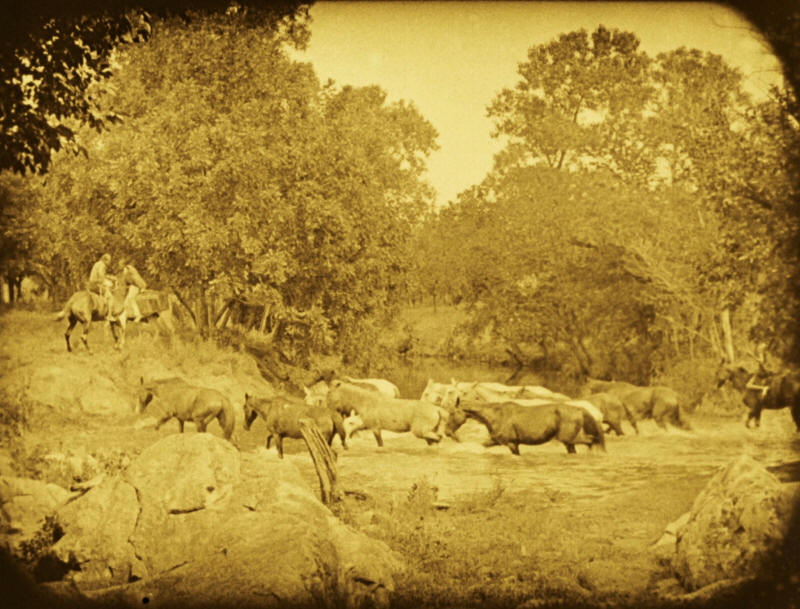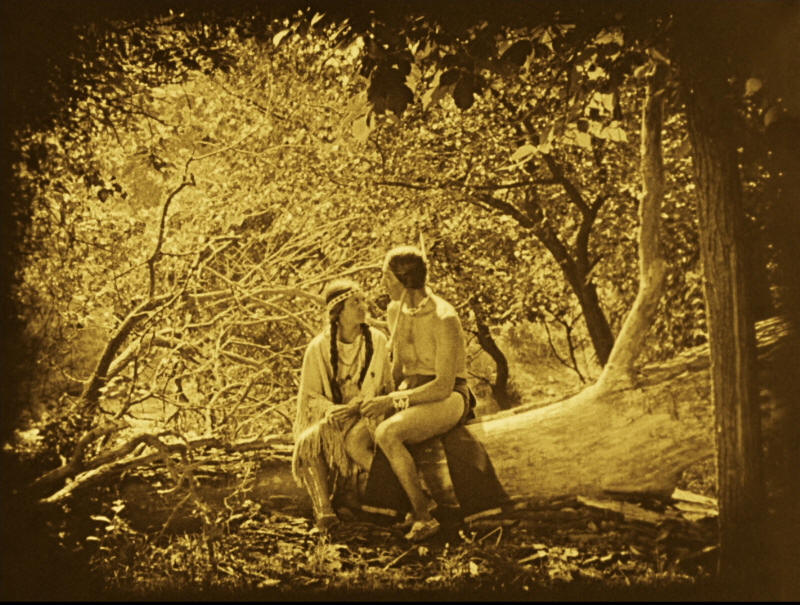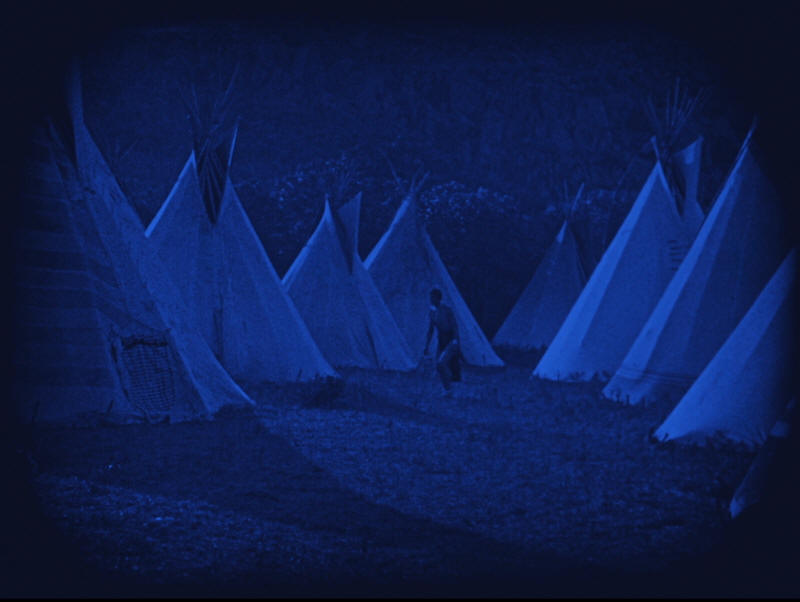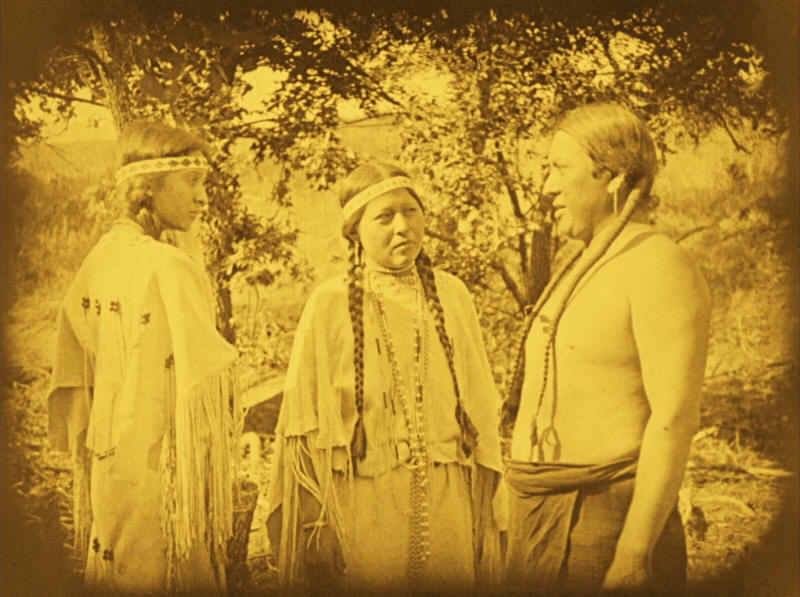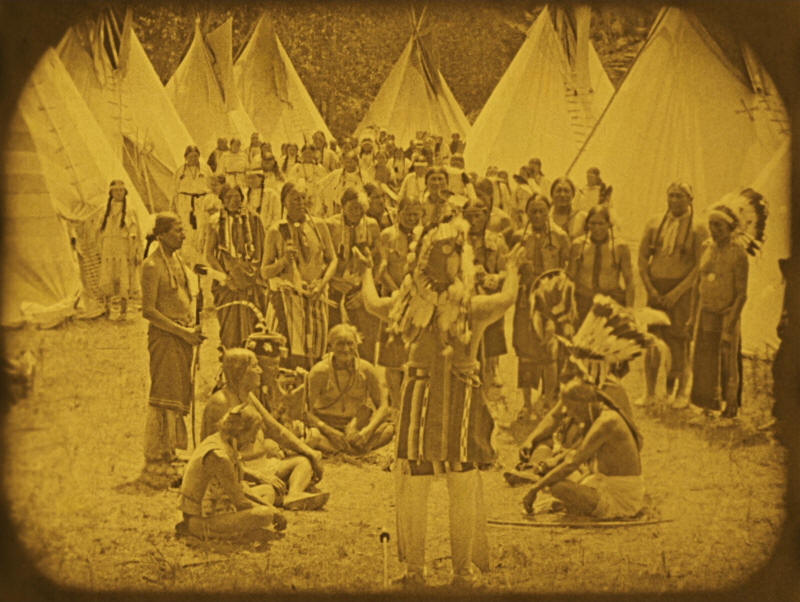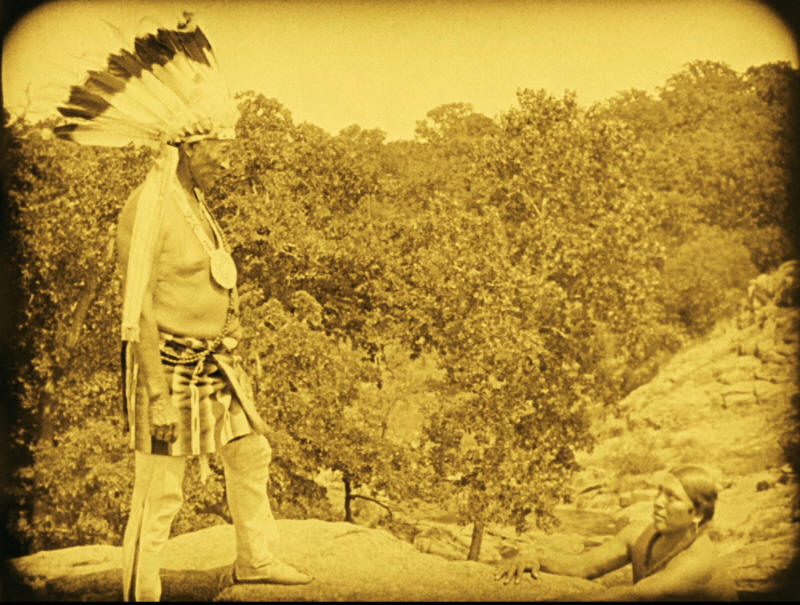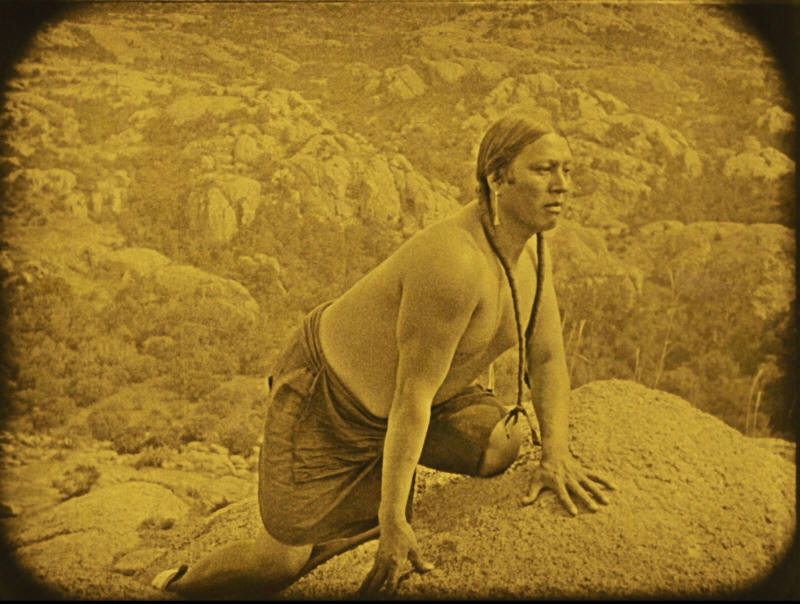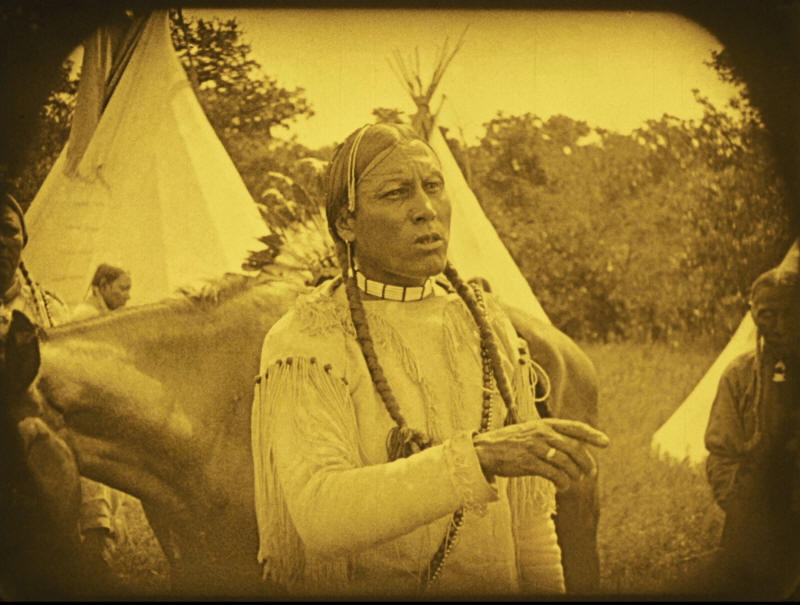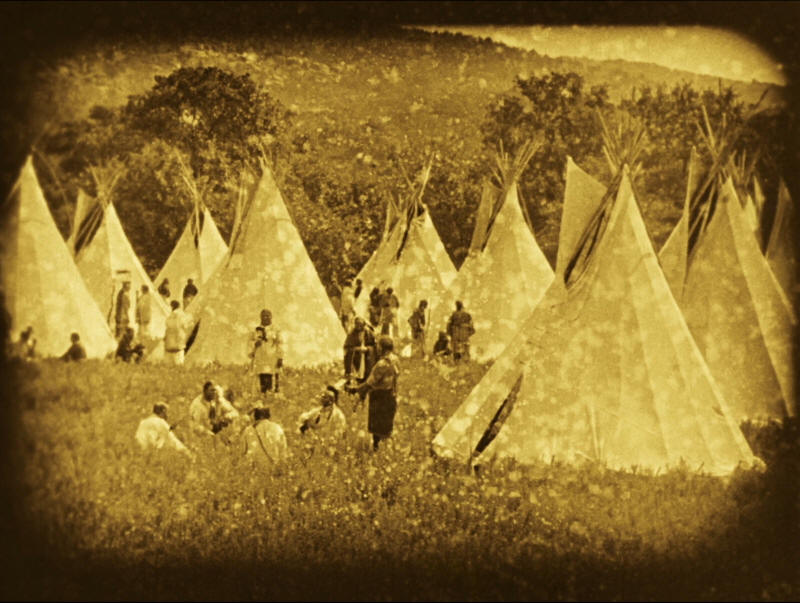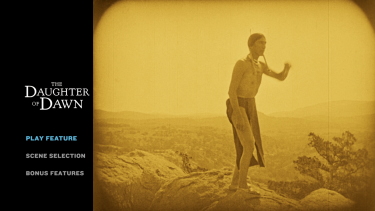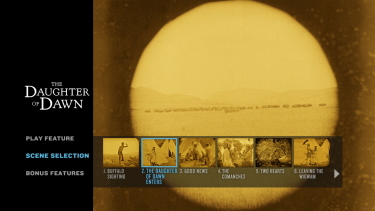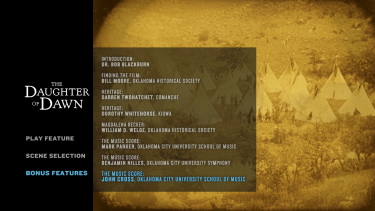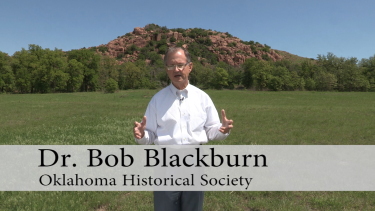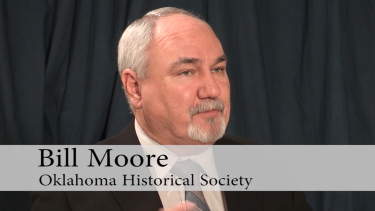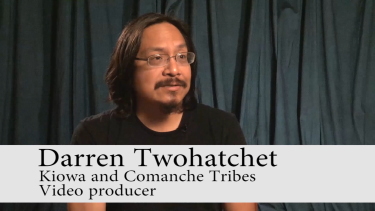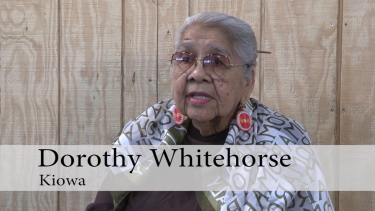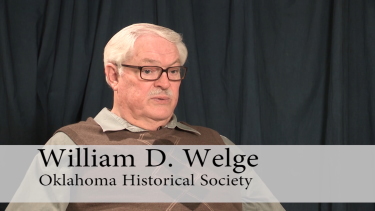![]()
![]()

![]()
![]()
|
Search DVDBeaver |
S E A R C H D V D B e a v e r |
|
|
The Daughter of Dawn [Blu-ray]
(Norbert A. Myles, 1920)
Review by Gary Tooze
Production: Theatrical: Texas Film Company Video: Milestone Films
Disc: Region: FREE (as verified by the Oppo Blu-ray player) Runtime: 1:18:40.875 Disc Size: 23,742,058,514 bytes Feature Size: 15,913,954,752 bytes Video Bitrate: 24.00 Mbps Chapters: 12 Case: Standard Blu-ray case Release date: July 19th, 2016
Video: Aspect ratio: 1.33:1 Resolution: 1080p / 24 fps Video codec: MPEG-4 AVC Video
Audio: LPCM Audio English 1536 kbps 2.0 / 48 kHz / 1536 kbps / 16-bit
Subtitles: • None (English Intertitles)
Extras: • Introduction by Dr. Bob Blackburn (4:39) • Finding the Film: (Bill Moore, Oklahoma Historical Society) (5:56) • Heritage: Darren Twohatchet, Comanche (7:48) • Heritage: Dorothy Whitehorse: Kiowa (6:28) • Magdalena Becker: (William D. Welge, Oklahoma Historical Society) (3:35) • The Music Score: (Mark Parker, Oklahoma City, University School of Music) (3:52) • The Music Score: (Benjamin Nilles, Oklahoma City University Symphony) (3:02) • The Music Score: (John Cross, Oklahoma City, University School of Music) (3:50)
Bitrate:
Description: THE DAUGHTER OF DAWN is an 80-minute,
feature
Silent film that was shot in May, June, and July of
1920 in the Wichita Mountains of southwest Oklahoma. The
story, played by an all-Native American cast of 300 Kiowas
and Comanches, includes a romantic rivalry, buffalo hunts, a
battle, village scenes, dances, deceit, courage,
hand-to-hand combat, and even a happy ending. The Native
American actors, who in 1920 had been living on reservations
for less than fifty years, brought with them their own tipis,
horses, clothing, and material culture.
The Film:
On October 17, 1920, audience members at the College Theater in Los
Angeles were treated to a “sneak preview” of a new movie — a drama
featuring a cast entirely made up of Native Americans. Motion Picture
News called it “an original and breath-taking adventure.” A year later,
the film played in Topeka, Kansas to little fanfare — we only know about
the engagement because the theater placed a few small ads in a local
newspaper. These two showings are the only known screenings of THE
DAUGHTER OF DAWN, a large-scale production of Comanche and Kiowa
life created by Norbert Myles and the Texas Film Company. After that,
the film disappeared for nearly a century—without a trace.
The film features an "all-Indian cast...shot in Indian Country",
with over 300 people from the Comanche and Kiowa tribes acting in the
film, including White and Wanada Parker, children of Quannah Parker. The
cast wore their own clothing and brought their own personal items,
including tepees. The film features the "Tipi with Battle Pictures",
which is a tepee in the collection of the Oklahoma Historical Society.
There are lances and tomahawks in the film which represent honors earned
in war by the Kiowa. Daughter of Dawn was filmed in May, June and
July 1920. The filming took place in the Wichita Mountains.
Image : NOTE: The below Blu-ray captures were taken directly from the Blu-ray disc. The Daughter of Dawn restoration, by the Oklahoma Historical Society, Film Technology (35mm) and Modern Videofilm (2K), had made it to Blu-ray transfer from Milestone Films. This is single-layered but the 78-minute film is supported by the transfer. There is obvious damage (see last capture as sample) but nothing continuous and there are moments of impressive detail. It's quite bright but the contrast layering benefits the presentation and it looks pleasing in-motion, all things considered. The Blu-ray presentation gives us the cleanest and most impressive viewing experience we are likely to get on home theater. Great job Milestone!
CLICK EACH BLU-RAY CAPTURE TO SEE ALL IMAGES IN FULL 1920X1080 RESOLUTION
Audio :Milestone use a linear PCM track for composer David Yeagley's original score performed by the Oklahoma City University Orchestra . It sounds very strong and beautifully supports the film. The intertitles are in English (see sample.) My Oppo has identified it as being a region FREE disc playable on Blu-ray machines worldwide.
Extras : They are eight video feature supplements (most less than 5-minutes) starting with an introduction by Dr. Bob Blackburn, Finding the Film: with Bill Moore of Oklahoma Historical Society, Comanche Darren Twohatchet, Kiowa Dorothy Whitehorse, William D. Welge of The Oklahoma Historical Society and three pieces on the musical score. All extremely informative and only enhance the appreciation of the viewing experience.
BOTTOM LINE: Gary Tooze July 1st, 2016 |
|
About the Reviewer: Hello, fellow Beavers! I have been interested in film since I viewed a Chaplin festival on PBS when I was around 9 years old. I credit DVD with expanding my horizons to fill an almost ravenous desire to seek out new film experiences. I currently own approximately 9500 DVDs and have reviewed over 5000 myself. I appreciate my discussion Listserv for furthering my film education and inspiring me to continue running DVDBeaver. Plus a healthy thanks to those who donate and use our Amazon links.
Although I never wanted to become one of those guys who
focused 'too much' on image and sound quality - I
find HD is swiftly pushing me in that direction. 60-Inch Class (59.58” Diagonal) 1080p Pioneer KURO Plasma Flat Panel HDTV PDP6020-FD
Oppo Digital BDP-83 Universal Region FREE Blu-ray/SACD
Player APC AV 1.5 kVA H Type Power Conditioner 120V Gary W. Tooze ALL OUR NEW FORMAT DVD REVIEWS
|
![]()
![]()

![]()
![]()


